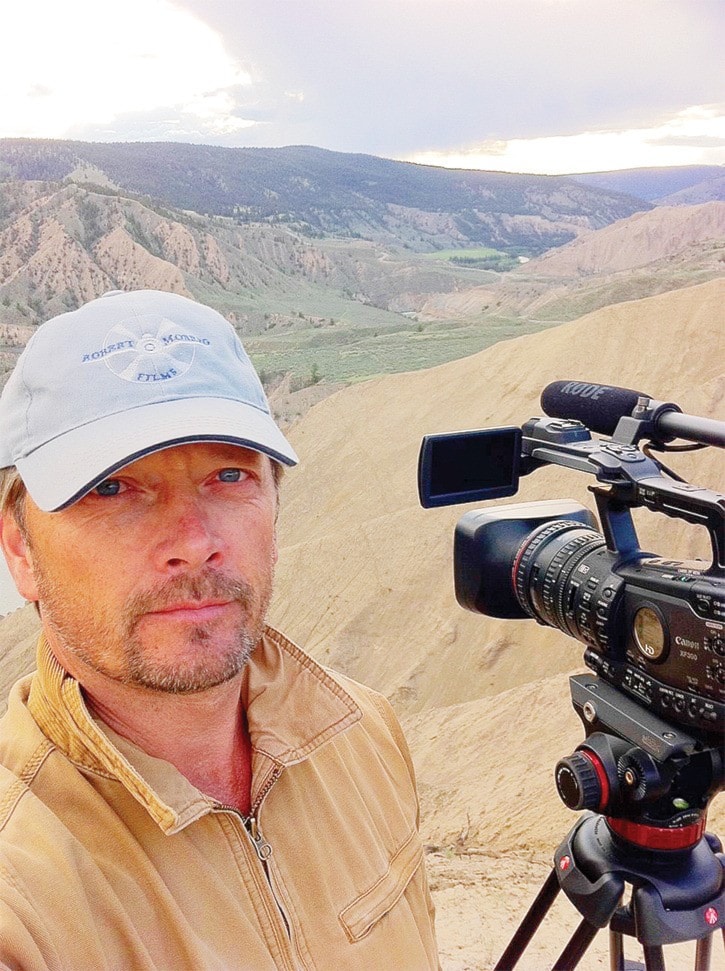Tara Sprickerhoff
Tribune Staff Writer
Many who make the trek to Farwell Canyon keep an eye out for the California big horned sheep that live in the area.
Robert Moberg, a filmmaker, said he saw those sheep and got to thinking.
“I would go out to Farwell Canyon for a little hike, and after being in Alberta especially, it was like, ‘Wow. This is really nice.’ I kept thinking there must be something here for me. There must be some kind of story,” he said.
What he discovered surprised him. The population of sheep in the area was once used as a source herd to reintroduce wild sheep into different spots in the U.S. where the sheep had been extirpated. Now, however, the sheep herd appears to be declining.
“There was the crux of the story,” he said. “Why the sheep are declining, their habitat and if there is anything that can be done about it.”
What followed was the beginnings of an idea for a documentary film.
Moberg has made films before. His feature film, The Plateau, which he showed in Williams Lake in 2010, followed the story of a young man who is stranded in the wilderness after a plane crash, and how he deals with the isolation and later intrigue that follows. He also has a business making corporate and aviation safety films.
Today he is about half way through making his documentary, Bighorns at the Junction, about the California big horned sheep at Junction Sheep Range Provincial Park.
The park is located at the junction of the Fraser and Chilcotin Rivers and was originally a wildlife reserve established to protect the bighorn sheep and the grasslands.
Grasslands such as these cover only 1 per cent of the land in the province, but are home to 33 per cent of B.C.’s endangered species according to the Grasslands Conservation Council of British Columbia. That is one of the reasons Moberg found the area so captivating. Aside from the sheep, he has become interested in the amount of species that live there, including everything from black widows, to rubber boas, to American badgers to long billed curlews. Some Moberg has seen and some he is still looking for.
“I find it a fascinating area. It’s almost under-utilized really. There’s nobody ever out there,” he said.
As part of the filming process, Moberg spends some of his time hiking in and camping around the junction, something he has received special permission for from B.C. Parks. Normally, camping is restricted in the park.
During that time he’s learned some lessons about trying to film in the desert-like conditions.
“It’s hard work carrying a camera, a backpack and 10 water bottles. It’s crazy. I learned the hard way,” he said. “In May we had that heat wave and I had a very difficult trek. I had to stop and recoup for about an hour before I could make it back to my vehicle. It was really bad, it was really hot, so just be aware when its hot out there you have to carry lots of water.”
While he is out exploring he keeps his eye on a herd of ewes in an “undisclosed location” near Farwell Canyon.
“I am trying to watch a little herd of ewes, about 17 of them. I’m keeping track of them and early in the season they had 13 lambs, which is a really high recruitment level,” he said.
“If the majority of those lambs survive in that group we’re doing pretty good.”
Unfortunately, he said, a number of them are likely to die off for a majority of reasons. Some of those reasons are what he is researching — finding out more about sheep decline in the area.
“There are factors like loss of habitat, wild sheep and domestic sheep disease transmission, wolves; predation from cougars is a big problem in a lot of areas, and possibly even poaching could be playing into it,” he said.
For the film, Moberg has been completing interviews with a number of individuals, both local and international.
He attended a wild sheep conference in Kelowna, and has interviewed experts in wildlife disease research.
In the future he has plans to talk to Chris Harris, as well as participate in a dip netting demonstration with local First Nations in the area. Moberg estimates he is about half way through the process of making his film. He started last December, and is hoping to catch all four seasons in the area.
Although he received a Canada Council grant for his last film, this documentary will be privately funded. There are five local funding partners for the film, and he has also been funded by the WIld Sheep Foundation in the United States.
Originally from Williams Lake, Moberg recently relocated back to the city from Edmonton, where he had been based.
His interest in filming came from when he worked as an extra in Macgyver and Wise Guy.
Later he took acting classes and workshops, and his passion built from there.
When his documentary is finished he plans on screening it here in Williams Lake, as well as send copies to the different Sheep Foundation chapters.
Furthermore, he hopes to show the film at different environmental and conservation-oriented film festivals and have the documentary broadcast, but said plans for that are currently in the works.
In the meantime Moberg continues to keep an eye on the sheep, and all the while they keep an eye on him.
“Sheep are different from other herbivores,” he said, “They watch you. They can see you even from 100 miles away.”
